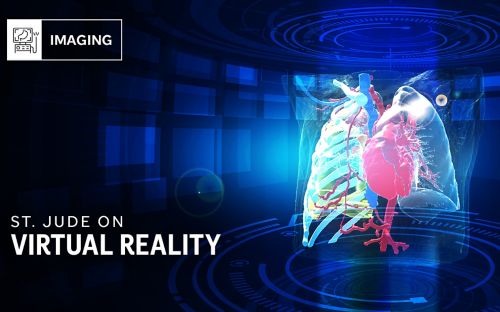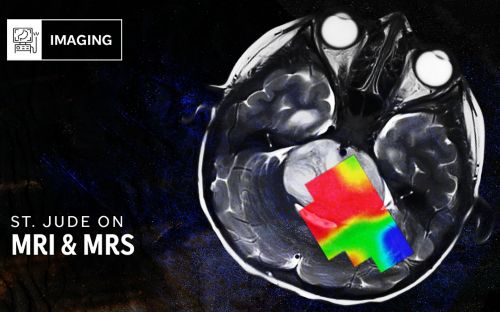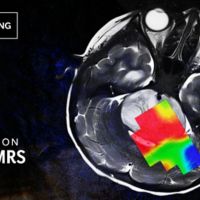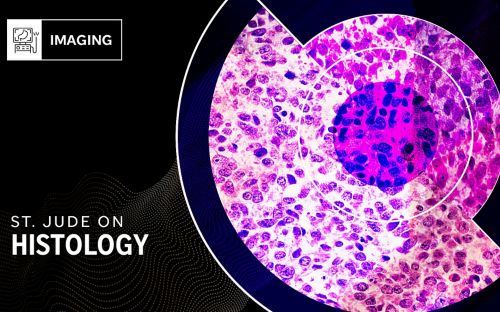Like seed and soil: the interplay between cells and their environment affects health

At St. Jude, Marta Derecka, PhD, is studying the interaction between blood cells and the bone marrow microenvironment.
Think of a lush, vibrant garden. Amid a base of dark, rich, nutrient-dense soil bursts forth an array of radiant colors, expansive leaves and sturdy stems. While this garden may appear a miracle of nature, its vitality results from a symbiotic relationship between seed and soil.
For such an abundant garden to emerge, the soil must first provide a nourishing environment where seeds take root and flourish. The health of the garden depends on the environment it grows in.
Now imagine these verdant greens and stately stalks wilting and withering unexpectedly. Do you remove the dying plants and place new seeds in the once-fertile soil, hoping they bloom like before? Or do you examine the soil to ensure the seeds’ surrounding environment can support and sustain growth? To a seasoned gardener, it seems unwise to plant seeds in soil that may threaten their health.
While the seed-and-soil concept helps us understand how things grow and renew in the world around us, it can also help illuminate our internal world and the interplay between cells and their environment.
Hematology’s seed and soil
In the human body, hematopoietic stem cells (HSCs) serve as the seeds from which all blood cells arise. HSCs primarily reside in bone marrow, a spongy environment in the bone that acts as soil for blood cell development. Nurturing this soil are mesenchymal stromal cells (MSCs), which are an essential part of the bone marrow microenvironment or niche.
At St. Jude, scientists are turning their attention to this hematologic seed and soil relationship to better understand normal and disease states of the body’s blood system. It is here, in the interactions between blood cells and their surrounding environment, that researcher Marta Derecka, PhD, St. Jude Department of Hematology, hopes to drive new, niche discoveries.
Finding a niche within a niche
Historically, when disease arose in the blood system, research and treatment efforts focused on blood cells while the surrounding bone marrow niche was largely ignored.
In fact, the first published hypothesis regarding the influence of the bone marrow niche on HSCs did not come until 1978 — over a decade after research confirmed the existence of HSCs in 1961. The field would see 25 more years pass before studies published in 2003 moved the idea of the bone marrow niche from hypothesis to proven fact.
“That had a lot to do with the fact that bones are not an easy material to work with, and that was a huge challenge for many years. Everything was so focused on hematopoietic stem cells and blood production in general that the microenvironment was a bit forgotten,” Derecka said. “So, it’s interesting to me that this is still a relatively unexplored area. There are many questions we need to address.”
Much of the existing bone marrow niche research focuses on factors that the niche expresses and secretes into bone marrow, such as signaling molecules like cytokines, growth factors and chemokines. Because these secreted factors help maintain HSC function, they are an area of immense interest when blood malignancies develop. But examining secreted factors leaves much to be desired regarding how the niche fundamentally operates.
During her postdoctoral work at the Max Planck Institute in Germany, Derecka realized research had yet to yield any understanding of the transcription factors and networks of genes that regulate cells in the niche. While St. Jude researcher Shannon McKinney-Freeman, PhD, Department of Hematology, was already working to understand the basic biological processes of the fetal bone marrow microenvironment, Derecka saw an opportunity to integrate her expertise into the Department of Hematology at St. Jude.
Beyond the seed and into the soil
Upon her arrival at St. Jude in 2020, Derecka developed a research program that seeks to study the bone marrow niche from the lens of transcription factors that regulate and impact the niche’s function. To do this, she devised a two-armed examination of the interplay between the niche and HSCs. “We realized a few years ago that the microenvironment is actually as complex as the blood system itself,” Derecka said. She admits looking at the crosstalk in the hematologic seed and soil is a new direction for the field.
To explore this crosstalk, one arm of her research program studies mutations in HSCs and how those mutated clones begin to damage MSCs in the surrounding bone marrow niche. “What often happens in blood malignancies is that you get a mutation in the hematopoietic stem cell and the mutated clone expands, like in leukemias. Those mutated clones start corrupting your bone marrow microenvironment and using the microenvironment for their own advantage, which can lead to chemotherapy resistance and immune suppression,” Derecka said. But she acknowledges there is yet a comprehensive understanding of how this niche damage occurs and what factors are responsible.
To determine these factors, models of myelofibrosis, an adult bone marrow malignancy, prove crucial. Derecka explains myelofibrosis is one of the best examples of how the bone marrow microenvironment becomes corrupted in hematologic malignancies and can hinder successful treatment.
In this malignancy, mutant blood cells begin corrupting MSCs in the bone marrow, which triggers excess production of extracellular matrix components, such as collagen. This overproduction of collagen then alters tissue structure and leads to bone marrow fibrosis — a buildup of scar tissue inside the marrow. Once the bone marrow becomes fibrotic, maintaining healthy blood stem cells is no longer possible. Derecka hopes to translate discoveries in adult myelofibrosis models to pediatrics.
But studying mutations in HSCs offers only a partial understanding of the possible origins and systematic impacts in hematologic malignancies. To fill this knowledge gap, Derecka’s other research arm studies mutations in stromal cells of the niche (MSCs) and how they affect HSC function.
For Derecka, determining the transcription factors that regulate MSC function in the bone marrow is necessary not only because it fills a knowledge gap but because the bone marrow microenvironment is a fixed aspect of the human body. Clinicians can exchange someone’s blood system via transplant but cannot do the same for the microenvironment.
“They will treat patients with bone marrow transplants to get rid of mutant blood clones causing the disease, but the microenvironment always stays. And we don’t know how microenvironment mutations contribute to disease progression, chemoresistance and immune surveillance. What changes are these mutations causing to the stromal cells’ function?” Derecka said.
To answer this question, she is digging further into the soil to get at the roots of hematologic malignancy.
Determining a genetic root of hematologic malignancy
A damaged bone marrow microenvironment can affect the gene expression and function of HSCs. This type of influence, called epigenetics, can help explain how certain genes are turned on or off. What is relatively new in the field is research to identify specific cues from the bone marrow niche that trigger epigenetic changes in HSCs.
Building on Derecka’s post-doctoral work with Rudolf Grosschedl, PhD, the researchers were the first to show experimental data, published in Nature Immunology, that confirmed epigenetic changes in HSCs driven by the niche. The work examined the role of the transcription factor EBF1, which is highly expressed in bone marrow MSCs and plays a key role in normal blood development. Because EBF1 regulates extracellular matrix components, examining this gene in the context of myelofibrosis was a natural fit.
“We know EBF1 deficiency in the stromal cells reduces myelofibrosis development. But the next step is identifying the exact genes that EBF1 regulates and the ones that prove important during myelofibrosis development. If we can identify these exact genes, we may be able to use them as therapeutic targets to delay or even prevent fibrosis of the bone marrow,” Derecka said.
Fertile ground for further study of hematology’s seed and soil
While the discovery of EBF1’s role in the bone marrow niche was seminal, Derecka continues to study other transcription factors expressed in the niche as potential players in blood malignancies. Current projects focus on RUNX1 and CEBPA, transcription factors expressed in blood cells that are known to cause cancer. Surprisingly, while these factors are also highly expressed in MSCs, they have never been studied within the context of the niche. Using samples from St. Jude patients who carry these mutations, Derecka’s team examines how the mutations impact function of stromal cells and the interactions between MSCs and HSCs.
Future collaborative projects with other St. Jude investigators will enable Derecka to dig deeper into the rich soil of the bone marrow microenvironment and enhance the understanding of disease and even treatment failure. A collaboration with Marcin Wlodarski, MD, PhD, Department of Hematology, aims to further study the niche in patients who experience bone marrow failure. The goal is to identify other mutational roots in these patients and understand how these factors change the function of the bone marrow microenvironment. The hope is that the study leads to better treatment design and transplant outcomes.
“The biggest change was when we started understanding that, in malignancies, this microenvironment is not a silent bystander. It plays an active role,” said Derecka. “We’ve seen that treating only malignant blood cells is often not enough. So, studying how disease damages the surrounding microenvironment can help us devise better treatment strategies for patients. It’s a huge evolution in the field.”






